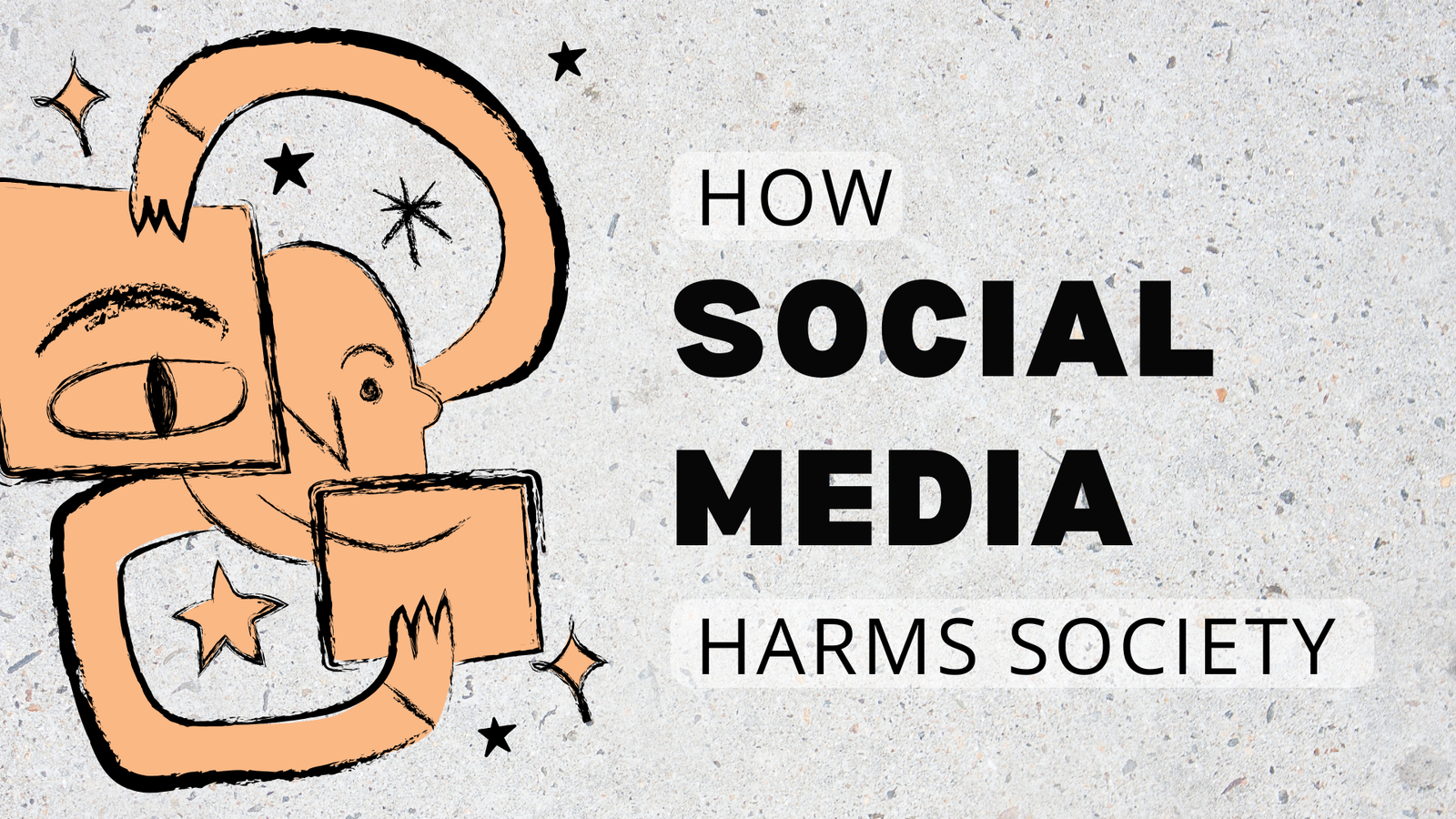Social media has fundamentally transformed the way we communicate, share, and consume information. However, this transformation hasn’t come without significant downsides. From weakening human interaction to mental health issues, the effects of social media on society are profound and, in many cases, harmful.
The Erosion of Face-to-Face Interaction:
How long has it been since you walked into a restaurant and saw a whole table of friends without their phones? It is hard to see people fully engaged with each other because most are lost in their digital worlds. This has resulted in a very noticeable erosion of face-to-face interactions. Non-verbal cues, the largest part of human communication, are lost in digital communication. Over time, this loss erodes the depth and richness of human connection.
The Social Media Experiment:
For over a decade, we’ve lived in a social experiment where digital communication often supplants face-to-face interactions. Many of us can remember a time before the proliferation of cell phones when it was necessary to be in the same room with someone to talk to them. This era promoted richer human interaction, free from the constant pull of digital distractions. Today, even this simple act of spending uninterrupted time with friends is a rare experience. The change from face-to-face to online interactions has gradually eroded the nuances and intricacies that once enriched human connections.
The Mismatch Between Biology and Technology:
One of the most disturbing aspects of social media is the mismatch between the rapid advancement of technology and the slower pace of human adaptation. Our biology has not evolved fast enough to cope with the changes in technology, and this disconnect has very serious implications for our mental and emotional well-being. Social media platforms are designed to be addictive, and they exploit the same mechanisms that underpin substance abuse. Addiction can change the way we behave and perceive reality over time.
The Change in Human Interaction:
We approached social media from the perspective of our previous face-to-face interactions. However, as digital interactions become more prevalent, our in-person interactions are starting to be seen through a digital lens. This has contributed to a more binary and polarized interpretation of human interaction, which can be seen in the increasing divisiveness of modern political discourse. The next generation will grow up in a world in which digital presence often takes over physical presence and may lead to further erosion of in-person social skills.
The Rise of Digital Presence Over Physical Presence:
Unfortunately, it’s disturbing to think that the younger generation will focus more on their digital presence than their in-person presence. Today, most social media sites keep asking for some sort of presentation of self. This creates an unattainable level of comparison among people and a disconnection from reality. It is worrying as it causes mental health issues such as anxiety, depression, and low self-esteem.
The Call for Balance:
So, what can we do to counteract these negative impacts? Closing down social media is out of the question, as it has become a part of everyday life. Rather, the future requires awareness and balance. Being aware of how social media affects our behavior puts us in control to some extent. A balance between in-person interactions and digital communications is essential. Face-to-face communication will be prioritized to maintain the entire gamut of human communication, which includes body language, emotion, and subtle tonality.
Steps to Regain Control:
Here are some practical steps to regain control over our relationship with social media:
- Limit Usage: Begin by deleting some social media apps from your phone. This makes accessing them less convenient and encourages mindful usage.
- Scheduled Breaks: Set specific times of the day for social media and stick to those times.
- Digital Detox: Periodically take a break from social media to reconnect with the real world.
- Quality Time: Spend uninterrupted time with family and friends, fully present and without digital distractions.
- Mindful Consumption: Be mindful of the content you consume and how it affects your mood and perception.
Conclusion:
While social media offers numerous benefits, it’s essential to recognize and address its harmful effects on society. By maintaining a balance between digital and physical interactions and taking conscious steps to control our social media usage, we can ease its negative impacts and raise healthier relationships and communities.
FAQs:
1. What is the primary harm of social media?
Social media erodes face-to-face interactions and can negatively affect mental health.
2. How does social media addiction compare to substance abuse?
Social media addiction shares similar symptoms to substance abuse, including compulsive behavior and withdrawal.
3. Why is balancing digital and physical interactions important?
Balancing both helps preserve the nuances of human communication and fosters healthier relationships.
4. How can I control my social media usage?
Limit usage, take digital detoxes, and prioritize quality time with loved ones.
5. What impact does social media have on mental health?
It can lead to anxiety, depression, and low self-esteem due to unrealistic comparisons and a distorted sense of reality.
6. What steps can I take to reduce social media’s negative impact?
Be mindful of usage, take breaks, and engage in face-to-face interactions regularly.
